Nginx For Beginners
Intermediate Config
Load Balancer
In this lesson, we’ll dive into what a load balancer does and how Nginx handles load balancing out of the box. You’ll learn how to configure upstream pools, choose the right algorithm, and ensure high availability for your web applications.
What Is a Load Balancer?
A load balancer is a network device—software or hardware—that distributes incoming traffic across multiple backend servers. It prevents any single server from becoming a performance bottleneck or single point of failure.
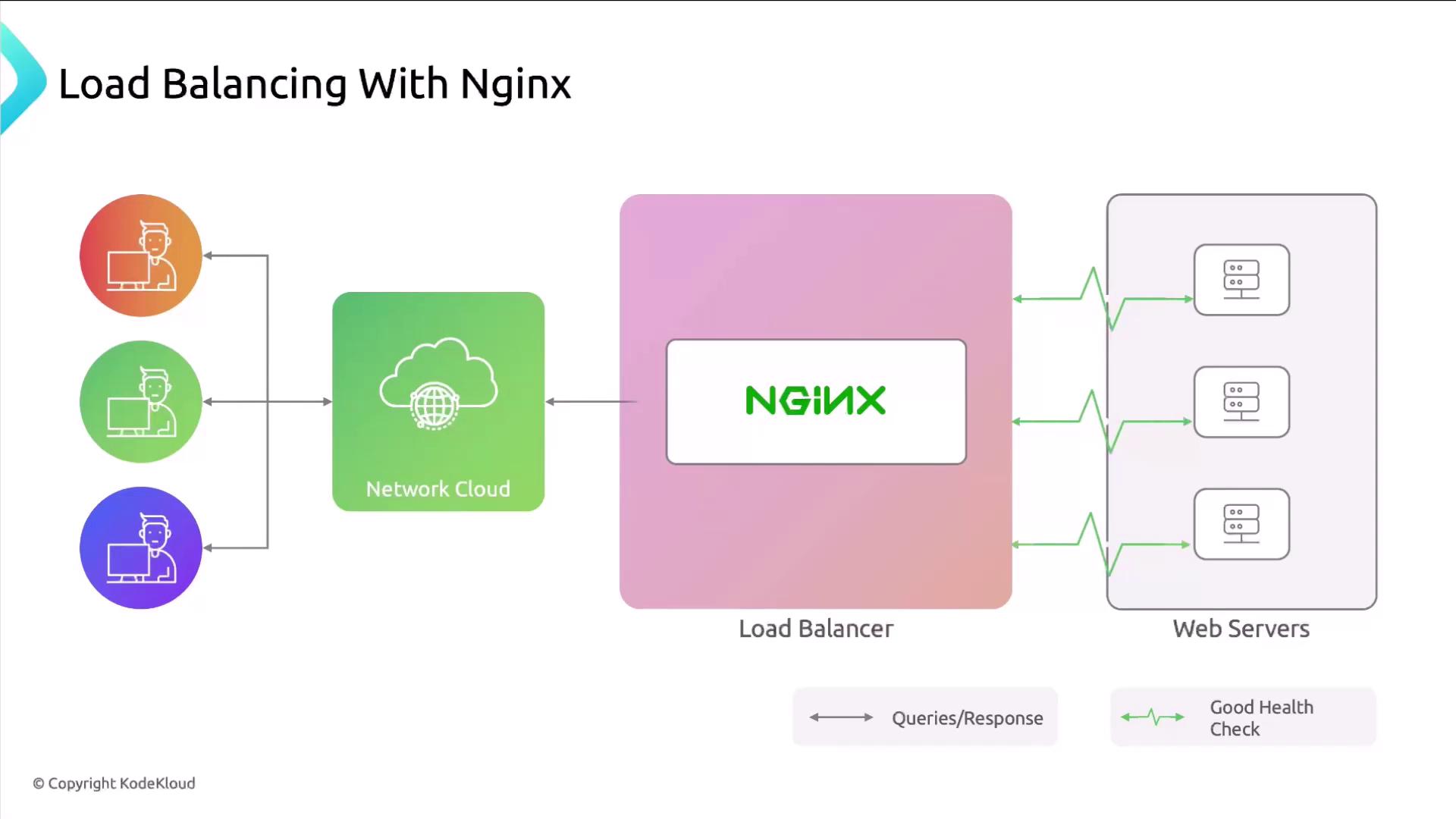
Without a load balancer, every request hits one server:
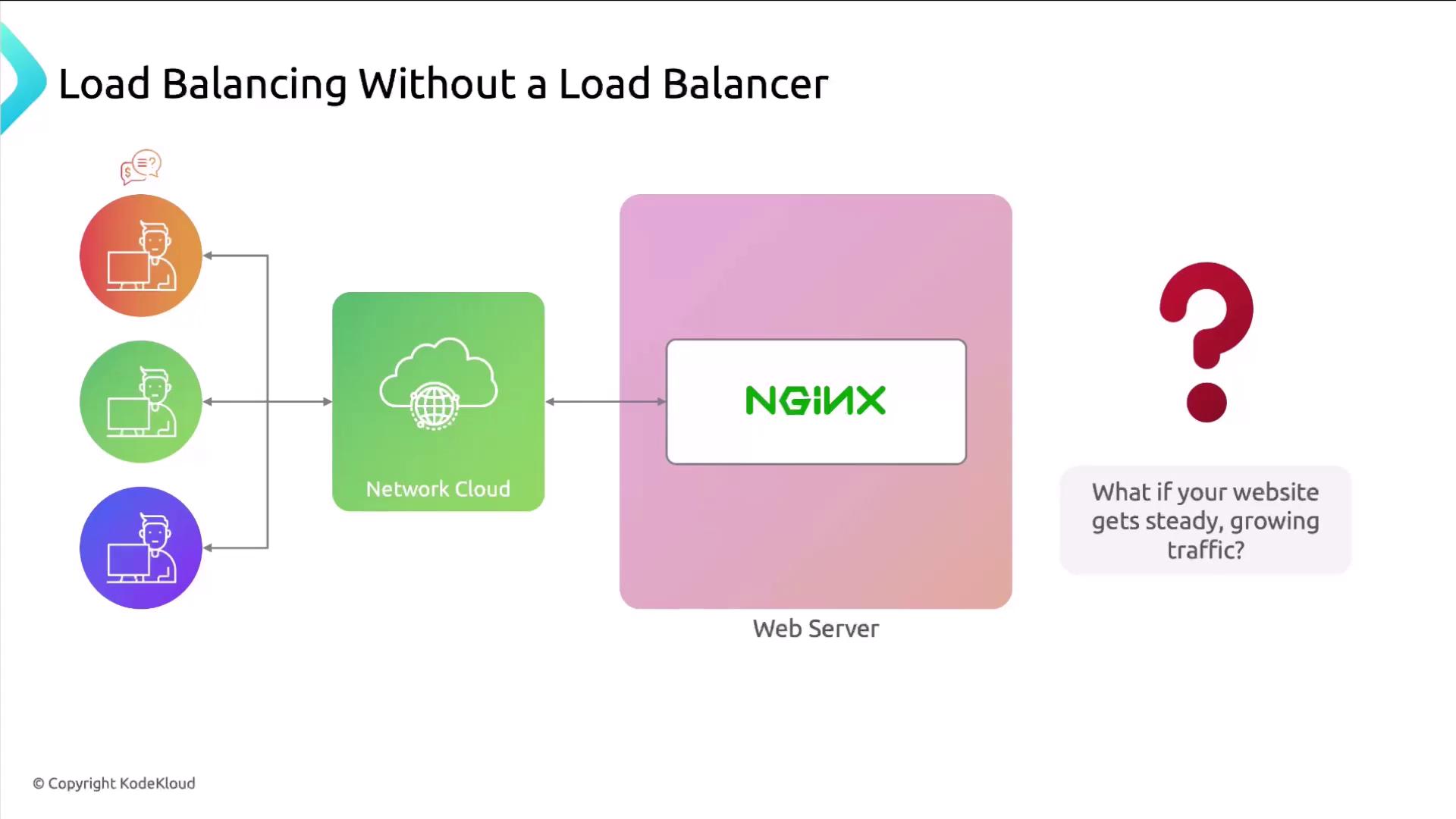
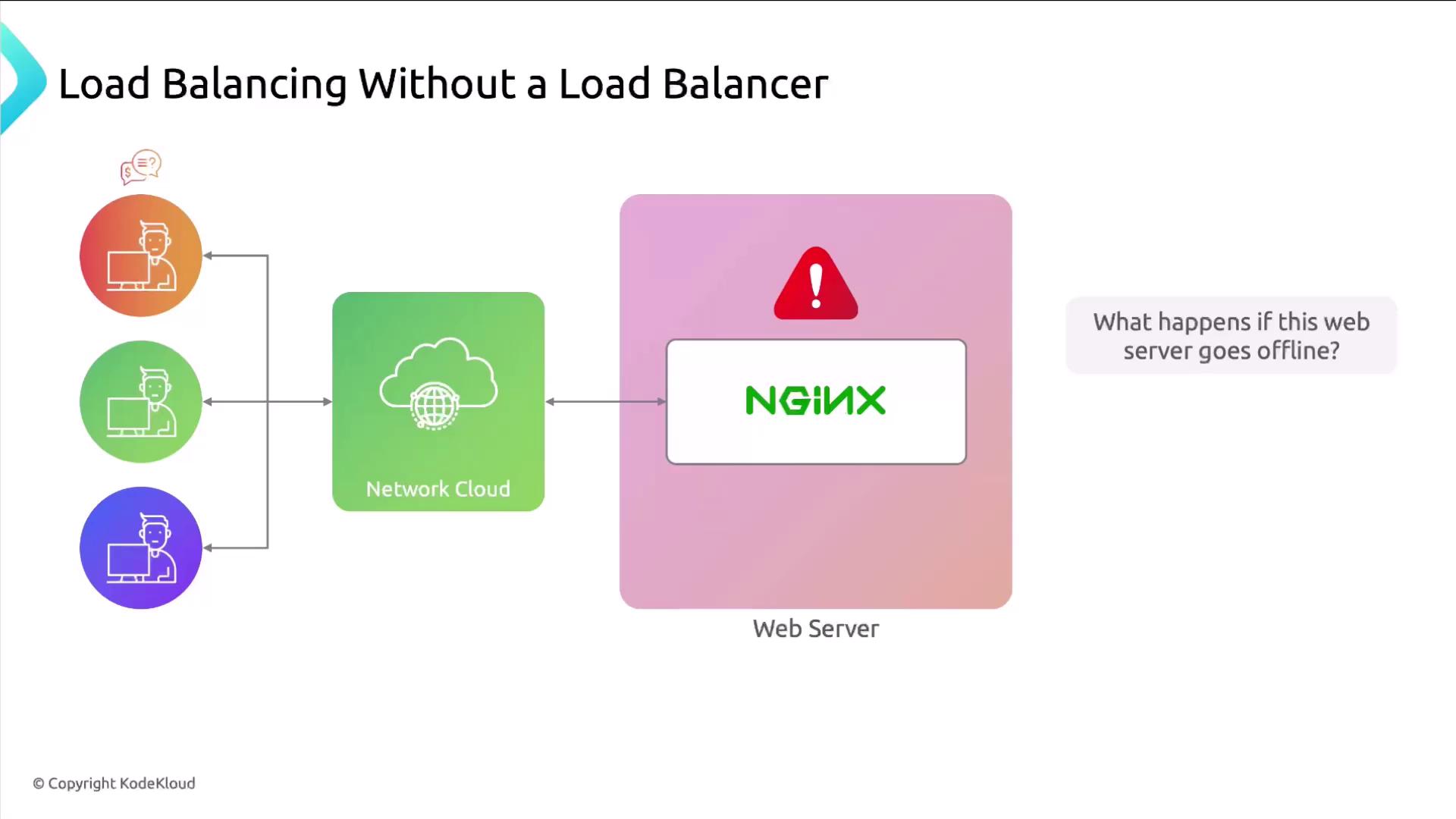
If that lone server crashes, your entire site goes down—and you lose traffic, revenue, and user trust.
Why Use Nginx as a Load Balancer?
Nginx not only distributes traffic but also performs health checks on backend servers. When a node fails, Nginx automatically marks it unhealthy and stops sending traffic its way, keeping your site available on remaining nodes.
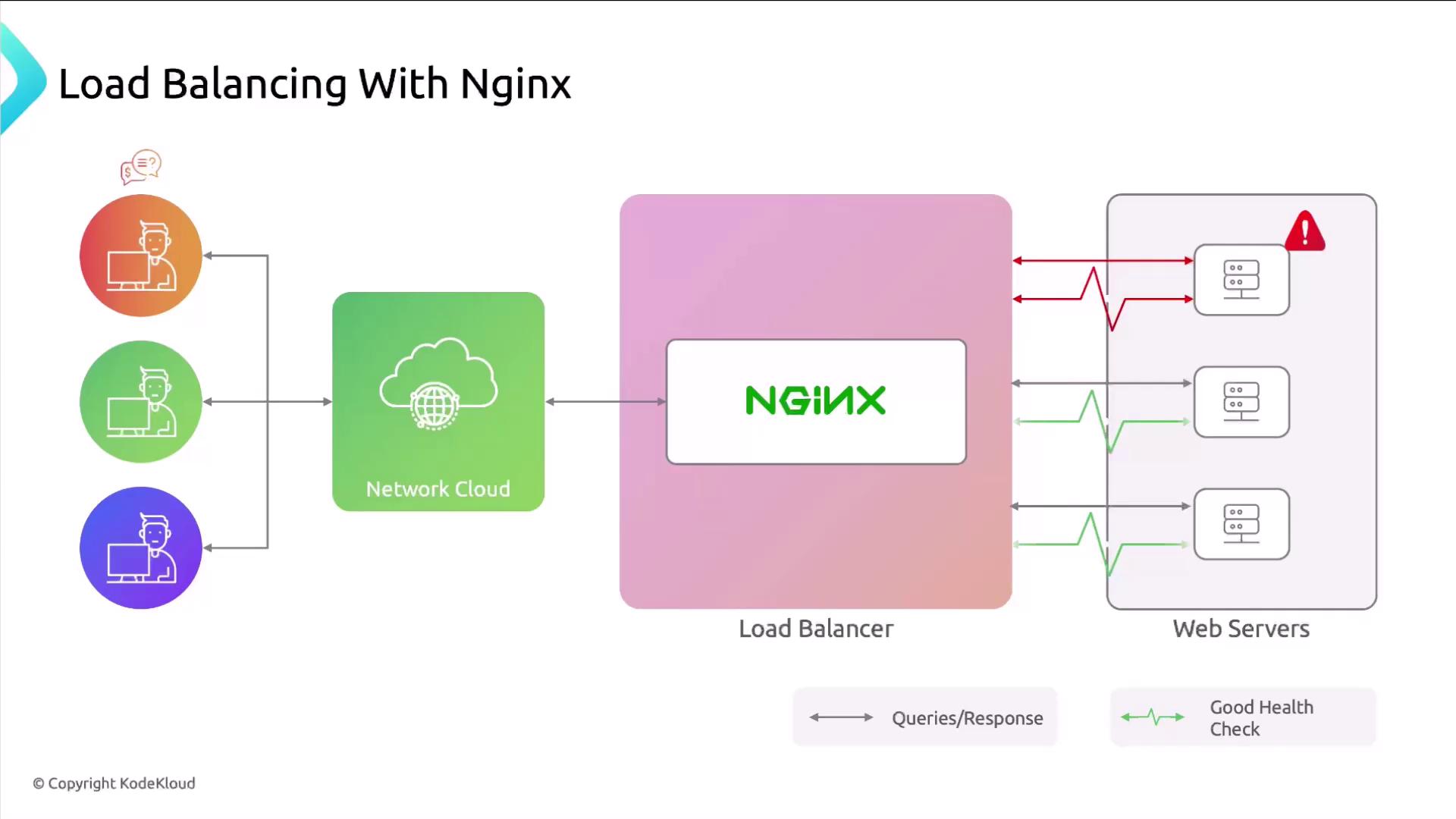
Note
By default, Nginx excludes failed servers from the pool. You can tune probe intervals, timeouts, and retry counts for advanced health checks.
Configuring Upstream Pools
Upstream blocks group your backend servers into a single logical name. Later, you reference that name with proxy_pass in a server block.
upstream backend {
server 10.10.0.101:80;
server 10.10.0.102:80;
server 10.10.0.103:80;
}
server {
listen 80;
server_name example.com www.example.com;
location / {
proxy_pass http://backend;
}
}
Load Balancing Methods
Nginx supports multiple algorithms to suit different workloads. Here’s a quick summary:
| Algorithm | Use Case | Directive |
|---|---|---|
| Round Robin | Even distribution (default) | — |
| Weighted Round Robin | Prioritize higher-capacity servers | weight= |
| IP Hash | Sticky sessions based on client IP | ip_hash |
| Least Connections | Send to server with fewest active conns | least_conn |
| Least Time* | Fastest response (NGINX Plus only) | least_time last_byte/header |
* Requires NGINX Plus subscription
1. Round-Robin (Default)
Distributes requests evenly in a circular order.
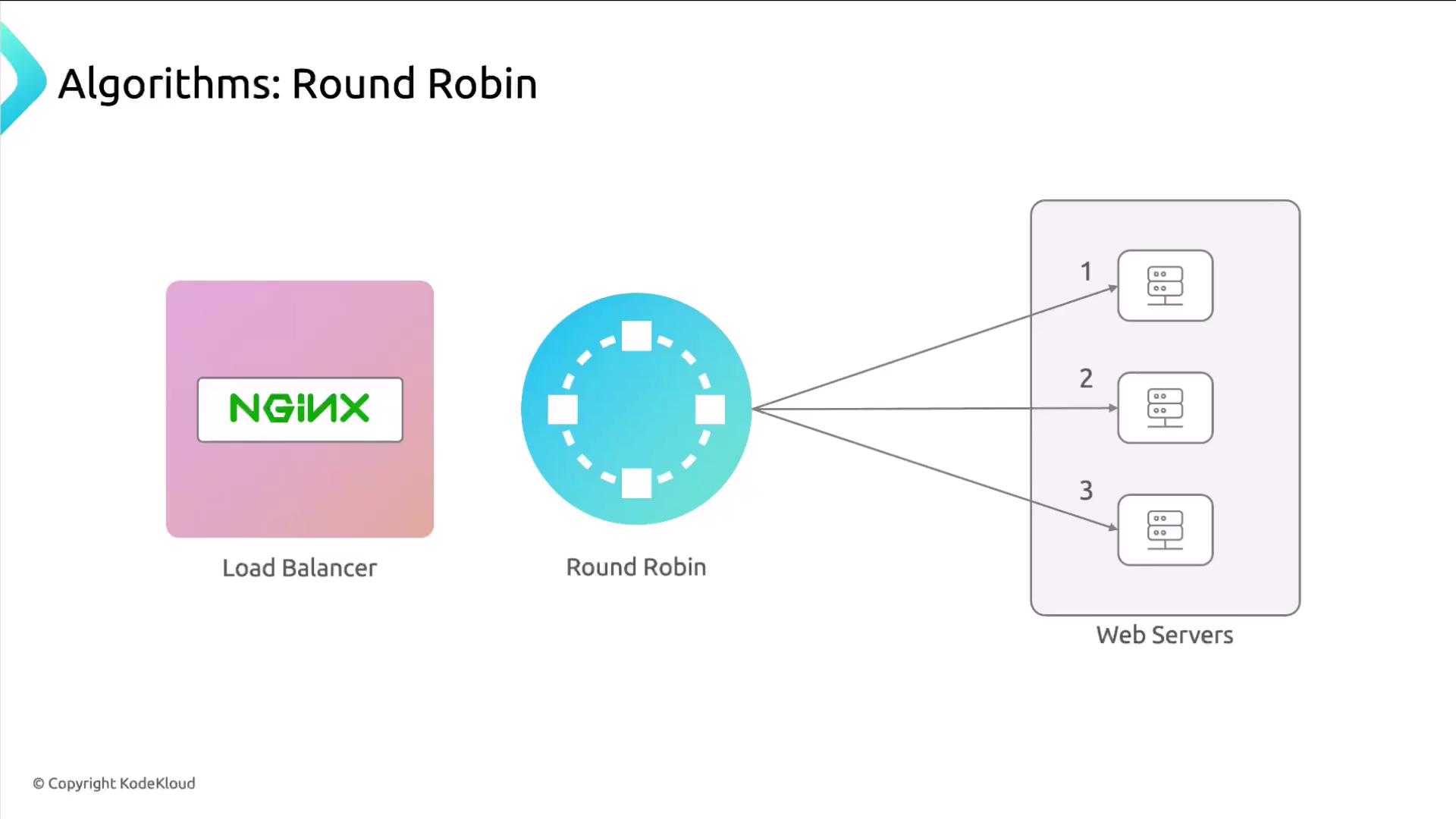
upstream backend {
server 10.10.0.101:80;
server 10.10.0.102:80;
server 10.10.0.103:80;
}
server {
listen 80;
server_name example.com www.example.com;
location / {
proxy_pass http://backend;
}
}
2. Weighted Round-Robin
Assign heavier weights to more powerful servers so they receive a larger share of traffic.
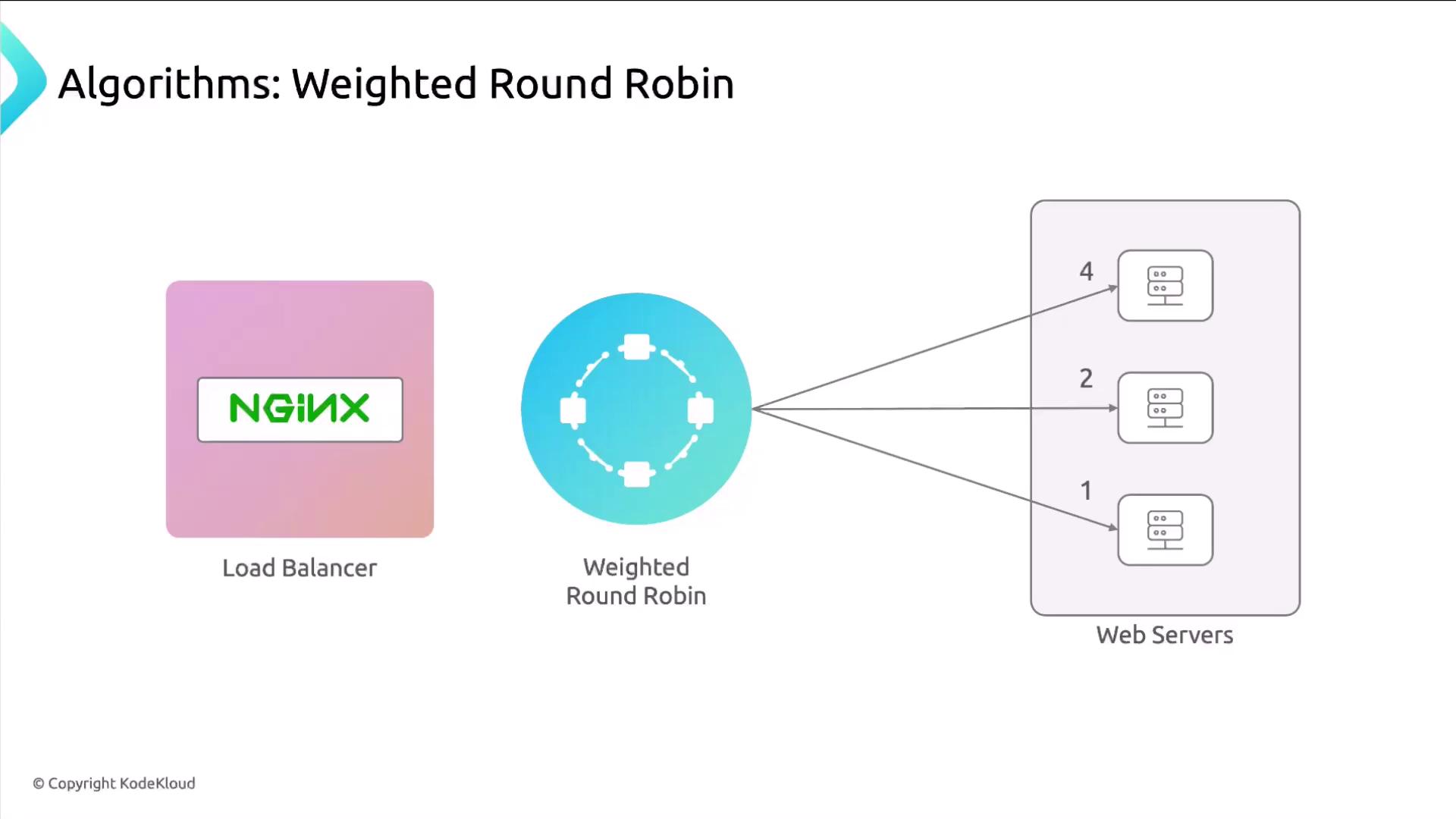
upstream backend {
server 10.10.0.101:80 weight=4;
server 10.10.0.102:80 weight=2;
server 10.10.0.103:80 weight=1;
}
server {
listen 80;
server_name example.com www.example.com;
location / {
proxy_pass http://backend;
}
}
3. IP Hash (Sticky Sessions)
Ensures the same client IP always hits the same server—ideal for session persistence when data is stored in memory on each backend.
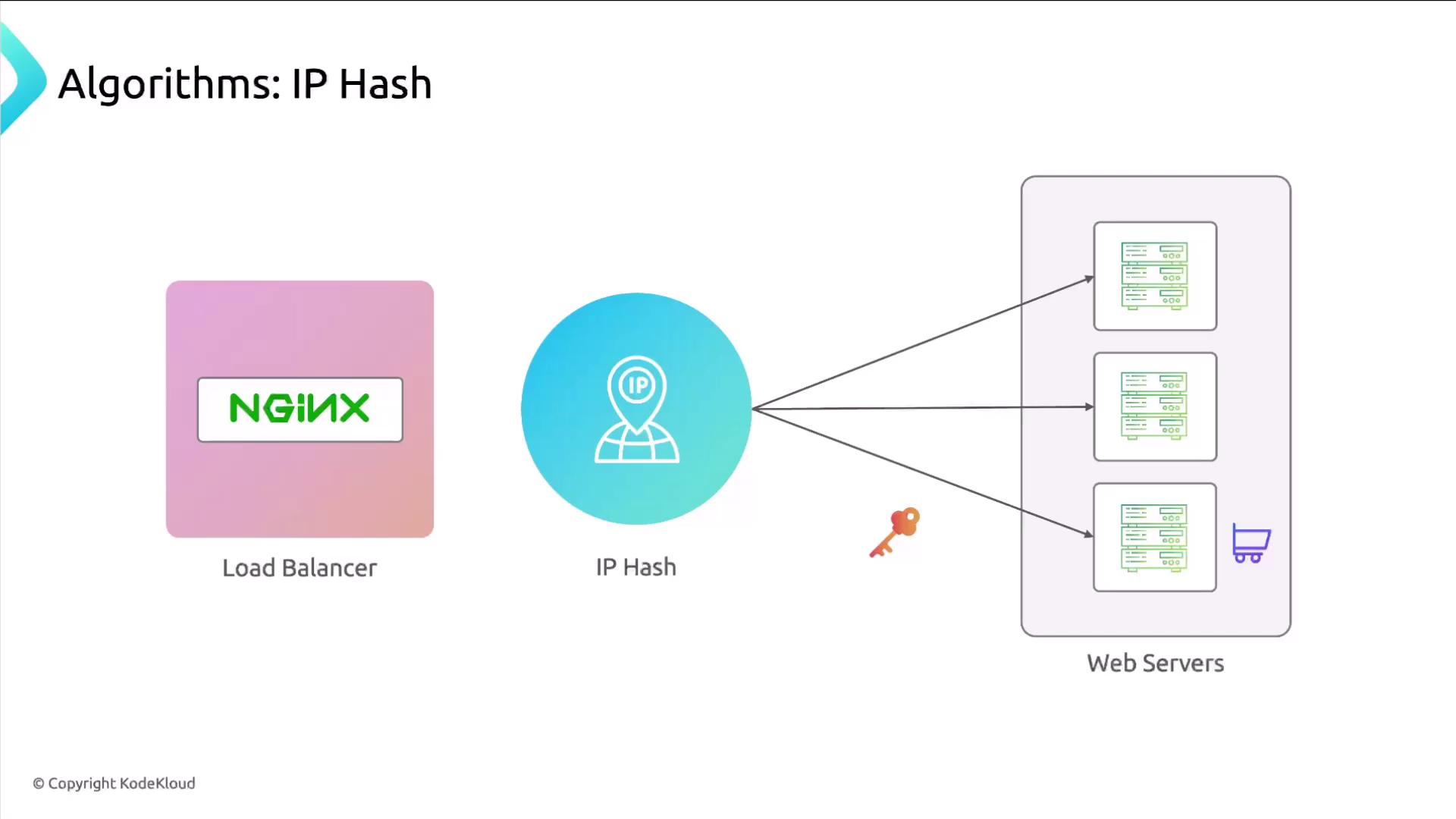
upstream backend {
ip_hash;
server 10.10.0.101:80;
server 10.10.0.102:80;
server 10.10.0.103:80;
}
server {
listen 80;
server_name example.com www.example.com;
location / {
proxy_pass http://backend;
}
}
Warning
Sticky sessions can lead to uneven load if some clients generate more traffic. Use only when backend-level session sharing isn’t an option.
4. Least Connections
Routes each new request to the server with the fewest active connections—ideal for dynamic workloads.

upstream backend {
least_conn;
server 10.10.0.101:80;
server 10.10.0.102:80;
server 10.10.0.103:80;
}
server {
listen 80;
server_name example.com www.example.com;
location / {
proxy_pass http://backend;
}
}
5. Least Time (NGINX Plus)
Selects the backend with the fastest response time—either time to first byte or last byte. This requires NGINX Plus.
upstream backend {
least_time last_byte/header;
server 10.10.0.101:80;
server 10.10.0.102:80;
server 10.10.0.103:80;
}
server {
listen 80;
server_name example.com www.example.com;
location / {
proxy_pass http://backend;
}
}
References
- Nginx Load Balancing Documentation
- Health Checks in NGINX Plus
- Nginx Upstream Module
- NGINX Plus Features
Watch Video
Watch video content